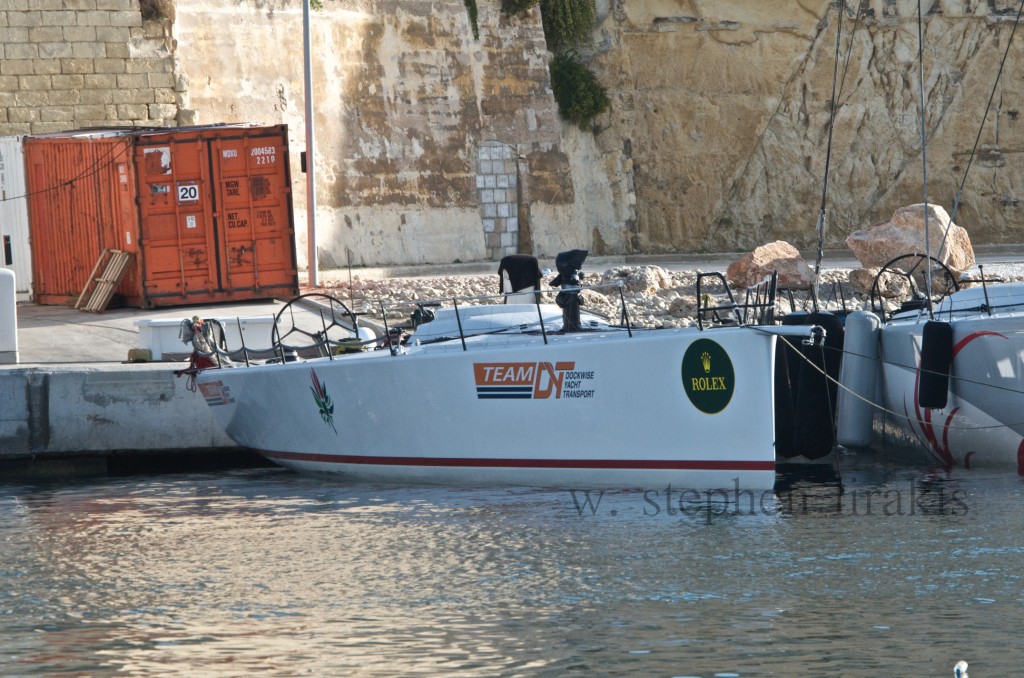This is not a new subject. The discussion has been a continuing thread for 30 years at least. In fact as I write I am reminded of boats even earlier that exhibited the trends. I would blame the trend for the fall from grace of the design firm Sparkman & Stephens. Olin always stated that he disagreed with the trend of flatter, straighter runs on boats and refused to compromise his beliefs to win contracts.
Races with large attrition rates are more common. The Fastnet race in 2007, the Middle Sea race in 2009 are good examples. In each example almost half the fleets did not finish.
As far as the Volvo 70’s. The boats have very little breakage. The number of crew injuries is another story. These boats are very hard on the people.

DESIGN TRENDS PROVE HARD ON BOATS AND CREW
By Bruce Nelson, Nelson/Marek Yacht Design
Much has been said and written about the attrition of 9 of the 15 big boats
from the latest Newport-to-Cabo Race, but I have yet to hear anyone mention
what I consider the major reason for the high rate of drop outs –
sea-kindliness, or the lack thereof.
The simple fact is that the large modern light displacement hull forms,
ranging from the 70 foot sleds spawned in the 1980’s to the even lighter
and beamier modern IRC hull forms, and even the latest Volvo 70
Around-the-World race boats, are far less sea-kindly than their heavier and
narrower predecessors when sailing into head seas.
One doesn’t need a PhD in Naval Architecture to recognize that these
lighter and faster, flat-bottomed hull forms are going to experience
greater accelerations, and decelerations, while slamming in waves – and the
longer, faster boats are going to slam harder than the shorter, slower
ones. Then add 10+ tons of lead suspended on a 10+ foot steel strut below
the hull, and watch the dynamic loads and motions spike through the roof!
These design characteristics are not only hard on the boat structural
engineers, and the rig and rigging, but the onboard crewmembers get to
enjoy the benefits as well. The fact is that aside from Bella Mente’s rig
failure, and a frighteningly loud mast tie-rod failure onboard Orient
Express, it appears there was very little actual structural damage amongst
the fleet, but many were concerned about safety and personal injury due to
the violent motion in the rough seas – with good reason.
Interestingly, when the Storm Trysail and Transpacific Yacht Clubs
developed the (now defunct) STP 65 Class, there was consideration given
towards a more sea-kindly set of design parameters, in lieu of the lighter
and beamier version which was ultimately selected. Apparently there was
more market interest in going faster off the wind than in performance and
comfort while thrashing upwind – which parallels the direction that the
Volvo boats and others have gone.
Today, many races which were once a test of seamanship are now more often a
test of nerves, and the physical stamina of the crew. Every ship in the US
Navy is designed to meet minimum sea-kindliness standards so that the
sailors are not routinely injured, or seasick beyond all usefulness.
Perhaps yacht racers need to consider some similar criteria.
And finally, I would like to nominate octogenarian Lindy Thomas as the
tough-old-guy-of-the-week award winner for completing the Cabo race onboard
his 70 foot sled Condor – nice going, Lindy!
